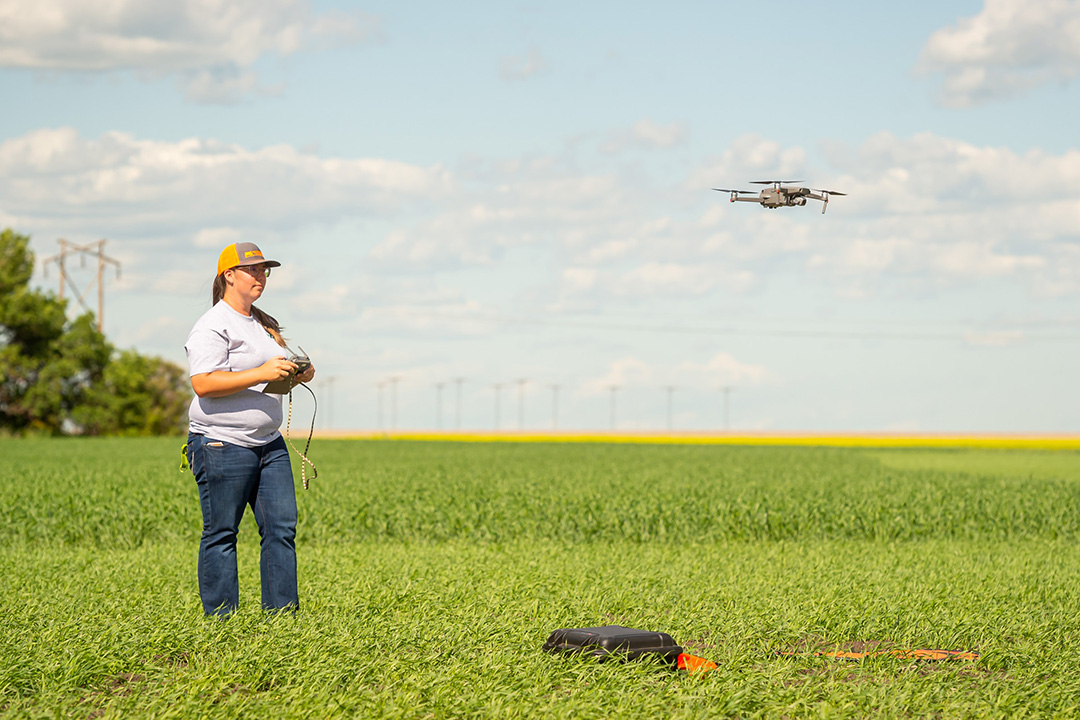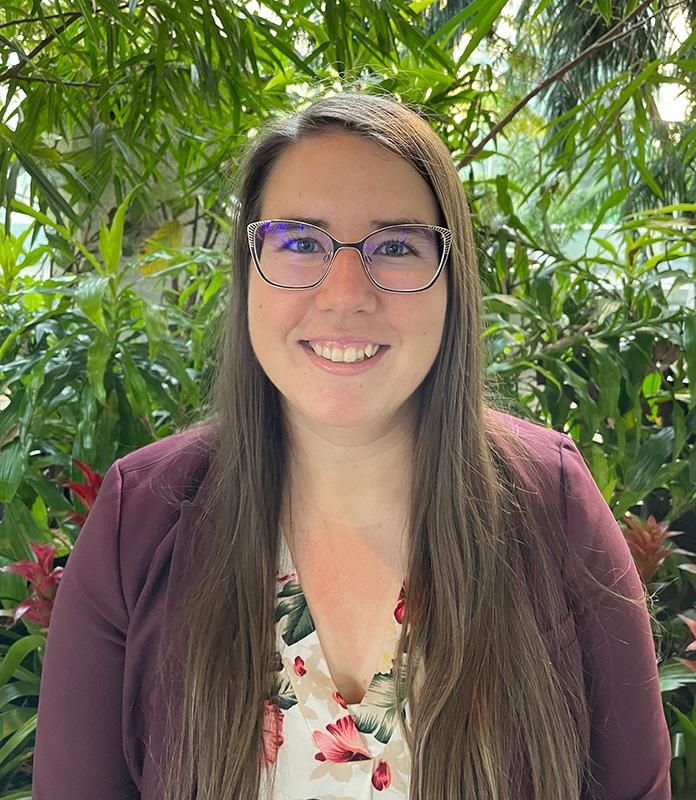
Drone innovation by USask researcher comes from family farm roots
Kaylie Krys is on a mission to bring accurate drone surveillance technology to the forefront of agriculture in Saskatchewan, starting right at home on her family farm and expanding into the province’s vast agricultural landscape.
By BROOKE KLEIBOERAs a University of Saskatchewan (USask) College of Agriculture and Bioresources graduate student, her research is focused on investigating how unmanned aerial vehicles (UAVs) – more commonly known as drones – can help farmers count the number of early season canola seedlings in their fields to offer a more solid idea of crop yields and help determine next steps in the growing season.
“Crop emergence is important as the number of plants that emerge can affect the amount of yield harvested,” said Krys. “Producers want these plant population counts so that they can make early season decisions, such as if reseeding is needed, based on the results.”

Although drones have been used to take footage of crops from above for producers to look at, Kaylie’s work takes drone imaging to a new level by implementing a computer model that allows emerging seedlings to be counted and reported back to the farmer.
“Through my post-secondary journey, I have grown a passion for sustainable agriculture,” said Krys, who is pursuing a master’s degree in Plant Sciences. “In my last summer of my undergraduate degree, I took an Agriculture Drone School by Landview Drones and absolutely loved it. I began looking into how I could apply UAVs on our own family farm and reading more about UAV use in the agriculture industry.”
Krys’s method works by using a drone to obtain images of a crop, and then uploading the images to a computer where a specialized model is trained to recognize canola seedlings. The computer program can provide a seedling count and a percentage of plant ground cover. This information is helpful to farmers as it provides an accurate method for keeping an eye on the growing season while being a relatively low labour-intensive activity.
“Many crop fields are 160 acres or larger, and current practices consist of walking across the field to manually count the plant populations,” said Krys. “Not only do UAVs provide a remote and fast alternative, but the images and data can be stored for later use or reference if needed.”
The computer model Krys is assisting in developing can currently count seedlings with 90 per cent accuracy. She notes that she and her research team have been working to increase the accuracy of the count by further training the computer model with additional images.
“To create the computer model that counts the canola plant seedlings, I am collaborating with Erik Andvaag, a graduate student from the USask Computer Science Department,” said Krys. “I have learned a lot about computer sciences, machine learning, and computer coding from this amazing connection created through my project.”
Collaborating with local producers has also been an integral part of Krys’s work.
“I had the opportunity to cold-call and connect with five outstanding Saskatchewan canola producers who let me apply my research on their crop land,” said Krys. “This research project helps to fill a gap in precision agriculture at the seedling stage of the crop, allowing for a more thorough understanding of the emergence uniformity and how that may affect grain yields.”
Krys plans to present her work at the USask Soils and Crops Conference in March 2023, and at the European Conference on Precision Agriculture in July. Her research work has been supervised by College of Agriculture and Bioresources professor and plant science expert Dr. Steve Shirtliffe (PhD).
Krys’s work has applications for many crops besides canola, and she has conducted the research with the goal of making sure local farmers are able to access and implement the technological solutions she is developing.
“What drives me forward is a passion for my family farm, and those like it, that have prompted me to learn more about agroecosystems, dig deeper into scalable precision agriculture practices, and strive to find the balance of providing for our land while it provides for us in a more sustainable way, so that we can continue to farm for generations to come,” said Krys.
Funding support for the project has been provided by the Canola Council of Canada, the USask-based Global Institute for Food Security and Plant Phenotyping and Imaging Research Centre, Canada First Research Excellent Fund, and Case New Holland International.
This article first ran as part of the 2023 Young Innovators series, an initiative of the USask Research Profile and Impact office in partnership with the Saskatoon StarPhoenix.
Together we will support and inspire students to succeed. We invite you to join by supporting current and future students' needs at USask.

